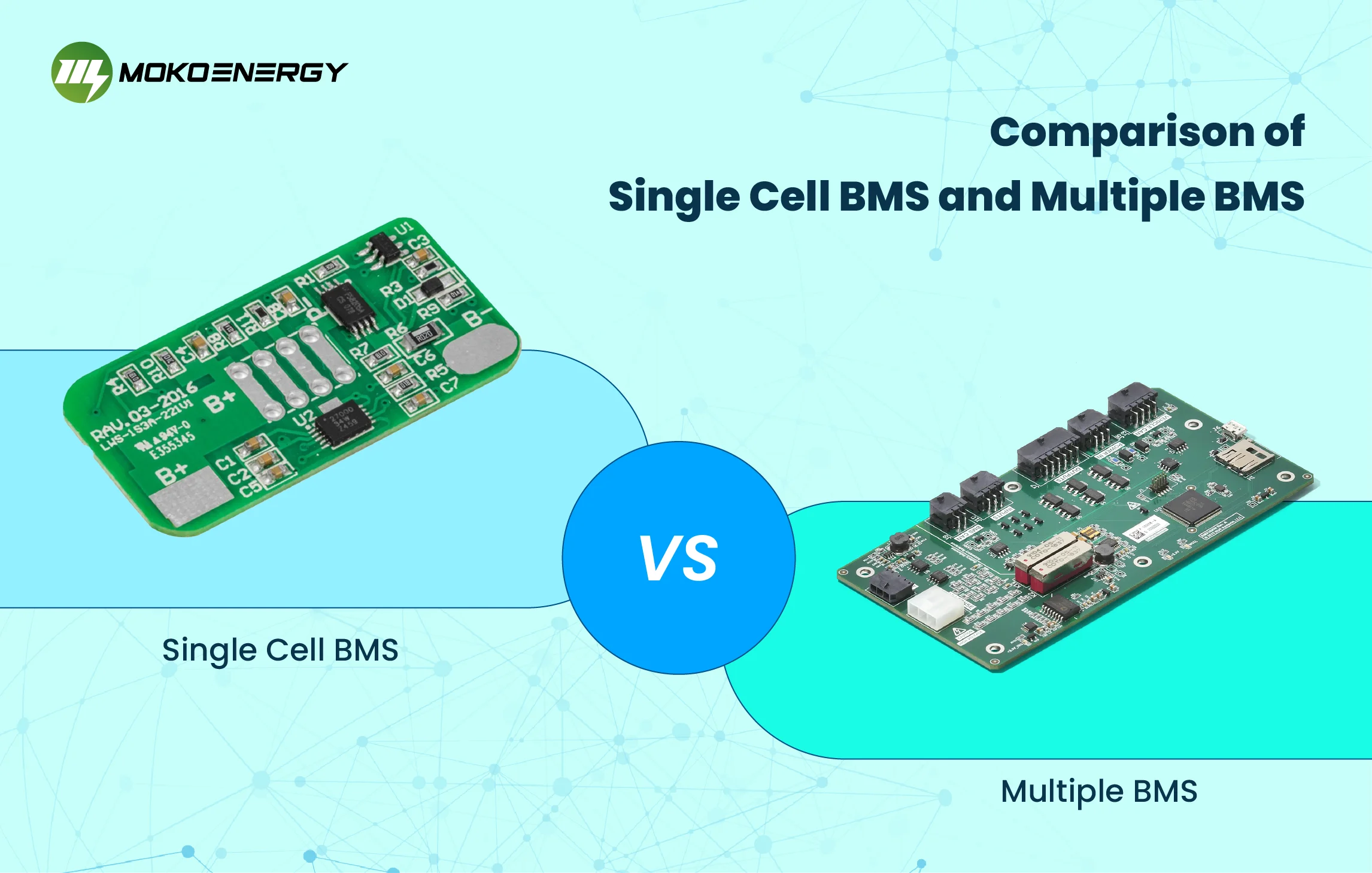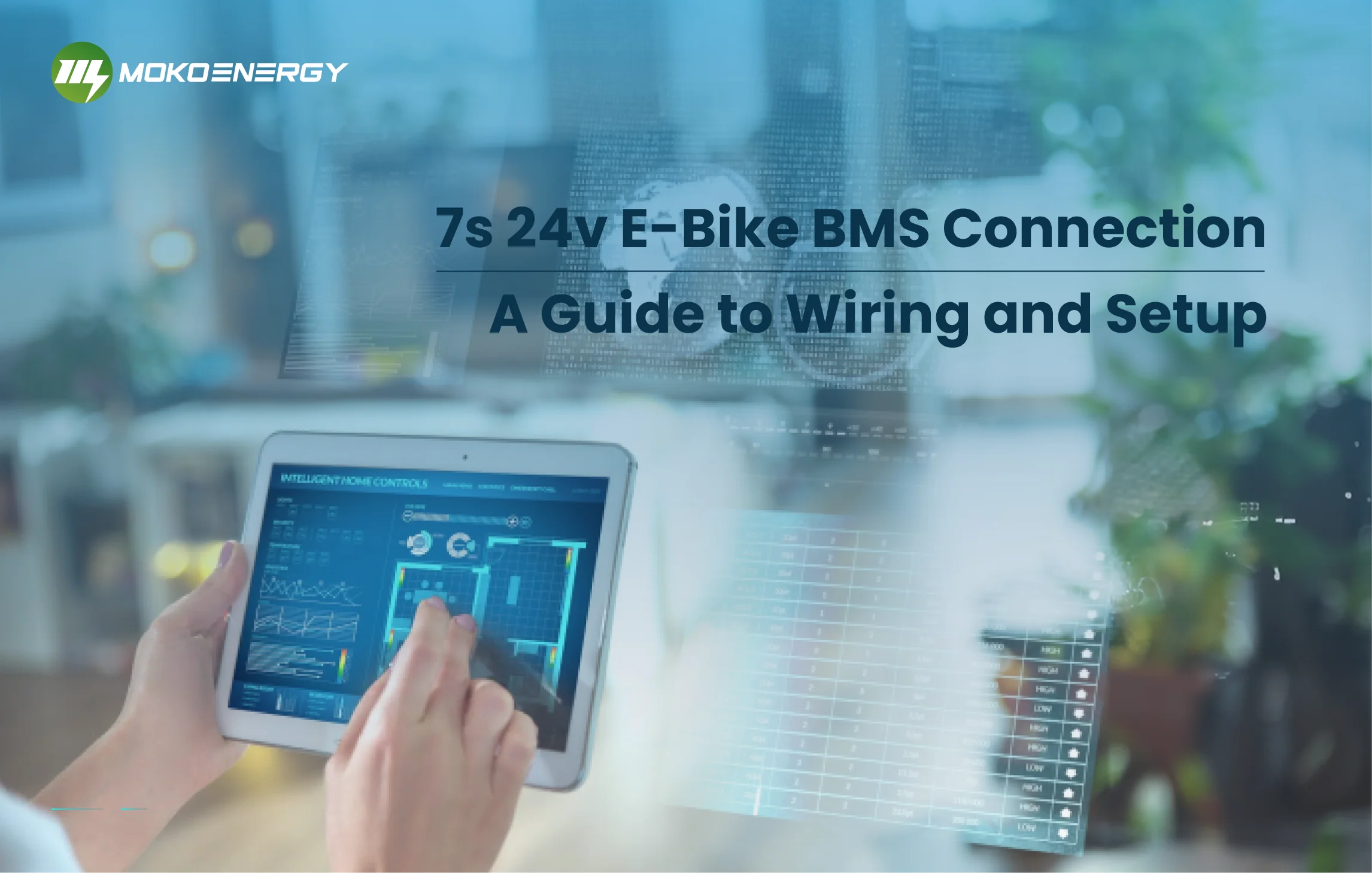You got an electric scooter to zoom around the city without polluting the planet. Nice one! But if you’re riding without a scooter BMS, you’re seriously crippling your e-scooter’s performance and putting its battery at risk. According to market research, the global electric scooter market size already exceeded USD 30 billion in 2022 and is projected to grow at a CAGR of 9.9% from 2023 to 2030 as adoption continues to rise sharply. Key to the performance and safety of these ubiquitous electric scooters are advanced electric scooter BMS.
 In this guide, I’ll show you why having a solid BMS is an absolute must for electric scooter owners that want to:
In this guide, I’ll show you why having a solid BMS is an absolute must for electric scooter owners that want to:
- Squeeze the maximum range out of each charge
- Avoid expensive battery replacements
- Prevent dangerous overheating and short circuits
Let’s get started.
What is a BMS and Why Do E-Scooters Need One?
A BMS is like a bodyguard for your e-scooter’s battery pack. Its job is to monitor voltage, temperature, and overall battery health to prevent issues that can degrade performance or create safety hazards.
Without a BMS overseeing operations, your battery is completely exposed to problems like:
- Overcharging that causes permanent cell damage
- Over-discharging that kills the battery way too soon
- Unbalanced cells that wear out faster than others
- Overheating that leads to fires or explosions
- Overcurrent and electrical shorts
In other words: NO BMS = BATTERY ARMAGEDDON
Let me run through a quick example to illustrate how destructive battery abuse can be without management systems in place.
Say you forget to unplug your e-scooter after a charge. As the hours tick by, overcharging causes lithium plating to build up on the anode. This creates electrical shorts inside the cell that produce hot spots.
Those hot spots spread heat to surrounding cells in a vicious, hard-to-stop cycle known as “thermal runaway.” Within minutes, temperatures inside the pack can soar past 500°C (932°F)!
At that point, the battery is a ticking thermal bomb that could easily torch your garage, home or whatever is in the vicinity when it ruptures.
Not exactly the eco-friendly transit solution you had in mind, is it?
Horrifying scenarios like that are exactly why a BMS is non-negotiable for safe, reliable electric scooter ownership.
A Good Battery Efficiency for Optimal Scooter Performance
The efficiency of the battery plays a pivotal role in determining the overall performance of an electric scooter. Key considerations include:
Energy Conversion: Efficient conversion of electrical energy to mechanical energy minimizes energy loss and enhances the scooter’s performance.
Charging and Discharging Rates: Battery efficiency is influenced by how quickly it can charge and discharge energy. Efficient batteries support faster charging and longer operating times.
Temperature Management: Maintaining optimal operating temperatures is crucial for battery efficiency. Overheating can lead to reduced performance and a shorter battery lifespan.
Longevity: A high-performing battery contributes to the scooter’s longevity, providing a consistent and reliable power source over an extended period.
Understanding the significance of battery efficiency underscores the importance of implementing advanced technologies such as Battery Management Systems (BMS) to optimize and safeguard the performance of electric scooters.
The 3 Must-Have BMS Features for E-Scooters
The BMS encompasses several functions categorized into the Safe Operating Area (SOA), State of Charge (SoC), and State of Health (SoH) for the battery. State of Charge provides a short-term evaluation of the battery’s energy usage before requiring a recharge, while State of Health focuses on the battery’s long-term performance and lifespan since its inception. The Safe Operating Area is paramount, ensuring the BMS employs active and passive temperature control mechanisms to keep the battery pack within the prescribed limits. Not all BMS’s are created equal though. For optimal e-scooter battery management, you need a system that nails these three core functions:
- Safe Operating Area (SOA): Makes sure voltage and temperature stay within safe limits through active cooling, charge throttling and other countermeasures. SOA is your #1 defense against overheating, thermal runaway, and other catastrophic failures.
- State of Charge (SoC) Monitoring: Gives you an accurate readout of remaining battery capacity. With SoC tracking, you can plan routes without worrying about getting stranded miles from home with a dead battery.
- State of Health (SoH) Tracking: Goes beyond momentary charge levels to gauge overall battery degradation over time. With SoH data, you’ll know when it’s time for a replacement before your old battery gives out completely.
A BMS system dialed in on those three areas treats your e-scooter’s battery pack with the TLC it needs for peak performance and a long, happy lifecycle.
Diving Deeper into BMS Battery Optimization
Let’s unpack those key features a little further to show why they’re so vital:
Safe Operating Area (SOA): Temperature is public enemy #1 for lithium-ion batteries. Exceeding the ideal range of 15-35°C (59-95°F) makes them unstable and ripe for catastrophic failure.
A robust SOA system continually monitors temperatures and automatically dials back charging rates or shuts things down if cells get too hot. It’s your firewall against meltdowns (both literal and figurative).
State of Charge (SoC): We’ve all gotten bitten by the “battery low” notification at the worst possible moment. Accurate SoC metering means never getting caught with a depleted battery miles away from home.
But it’s about more than just getting readouts—a quality BMS keeps cells perfectly balanced during charges/discharges. That way, energy gets utilized evenly across the entire pack instead of stressing a few cells to their limits.
State of Health (SoH): This one’s all about extending your battery’s usable lifespan. SoH sensors can detect when cells start to degrade, so you can take preventative measures. With smart charging protocols, cell balancing and other preservation techniques, a SoH-optimized system maximizes your battery’s cycle life.
Between SOA’s safety vigilance, SoC’s range awareness and SoH’s cycle tracking, your BMS operates as a battery corps keeping your pack in tiptop condition.
Drawbacks of Not Using a BMS in An Electric Scooter
Lack of Overcharge and Over–discharge Protection: Without a BMS, the battery has no protection against overcharging or deep discharging, which can lead to cell damage, capacity loss, and reduced battery lifespan.
No Cell Balancing: A BMS actively balances the charge of all cells in a battery pack to prevent individual cells from becoming overcharged or undercharged relative to the rest. Without balancing, some cells will fail prematurely.
No Thermal Management: BMS monitors battery temperature and modulates current flow to prevent overheating. Without thermal oversight, the battery is at risk of temperature-related damage or failure.
Inability to Accurately Gauge State of Charge and Health: With no monitoring chip, there is limited visibility into the battery’s state of charge or overall health, making it difficult to prevent issues before they cause operational failures.

Increased Safety Hazards: Lack of critical safeguards managed by BMS software and hardware significantly increases the risk of overcurrent, short circuit, overtemperature, and other dangerous faults.
Overall Lower Reliability: The battery vulnerabilities listed above ultimately lead to reduced reliability, performance issues, shorter operating life per charge, accelerated degradation, and higher failure rates.
Next Steps for Better Battery Management
Skimping out on a quality BMS is like riding around on a ticking time bomb. At best, you’re leaving tons of untapped battery potential on the table. At worst, you’re putting yourself at risk of watching your ride go up in flames.
Now that you know the dangers and have seen the BMS features that matter most, it’s time to start evaluating battery management solutions and e-scooter models with robust BMS designs.
If you need help customizing a BMS for a scooter project or tips on integrating one into an existing product, I’m just a click away. Electric mobility is a huge part of the sustainable future we all want—so let’s make sure we’re doing it right by treating batteries with the respect they deserve from Day 1.
Check back soon for more expert advice on maximizing the life, range and safety of your electric scooter. We’re just getting started!






